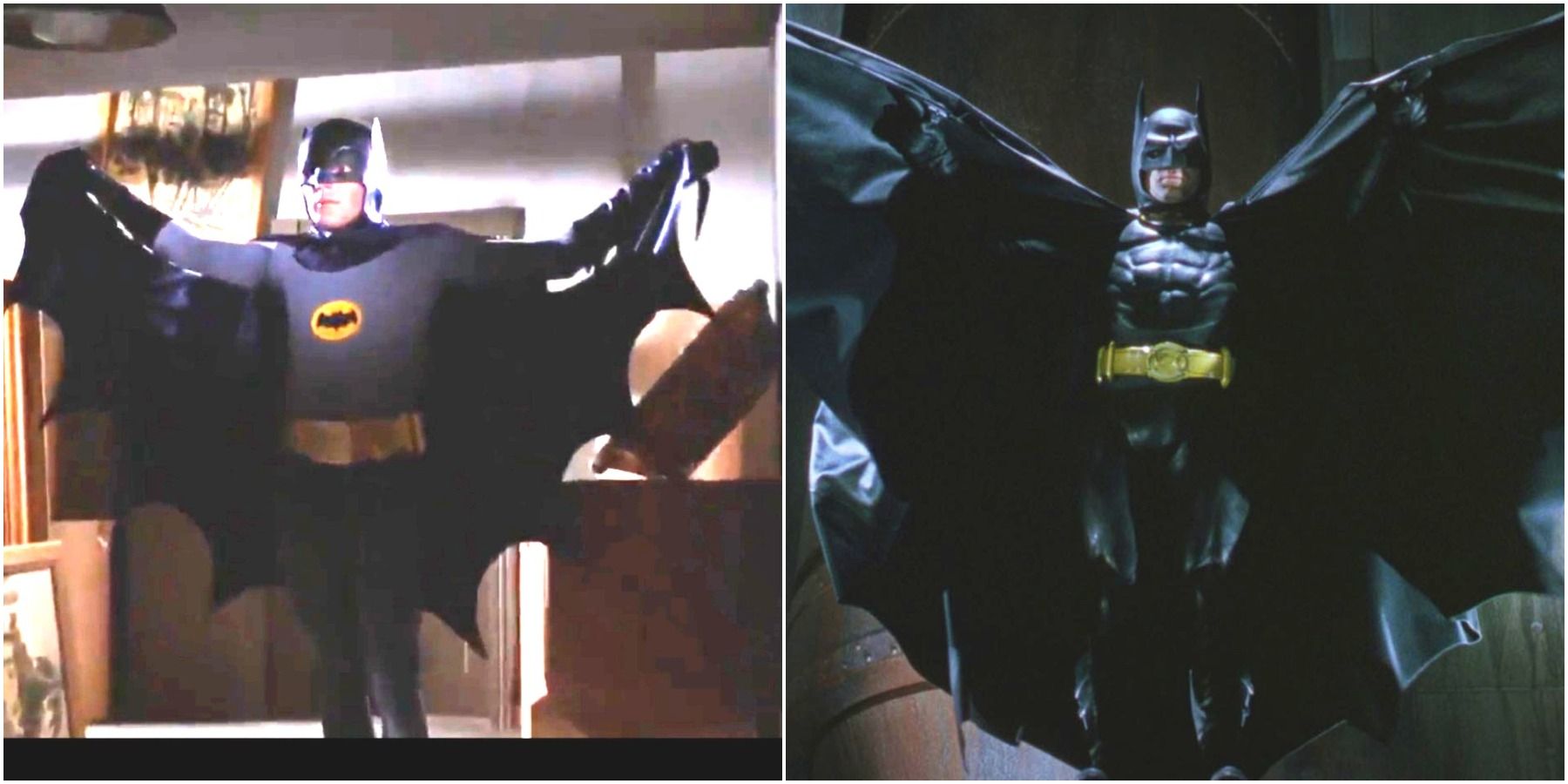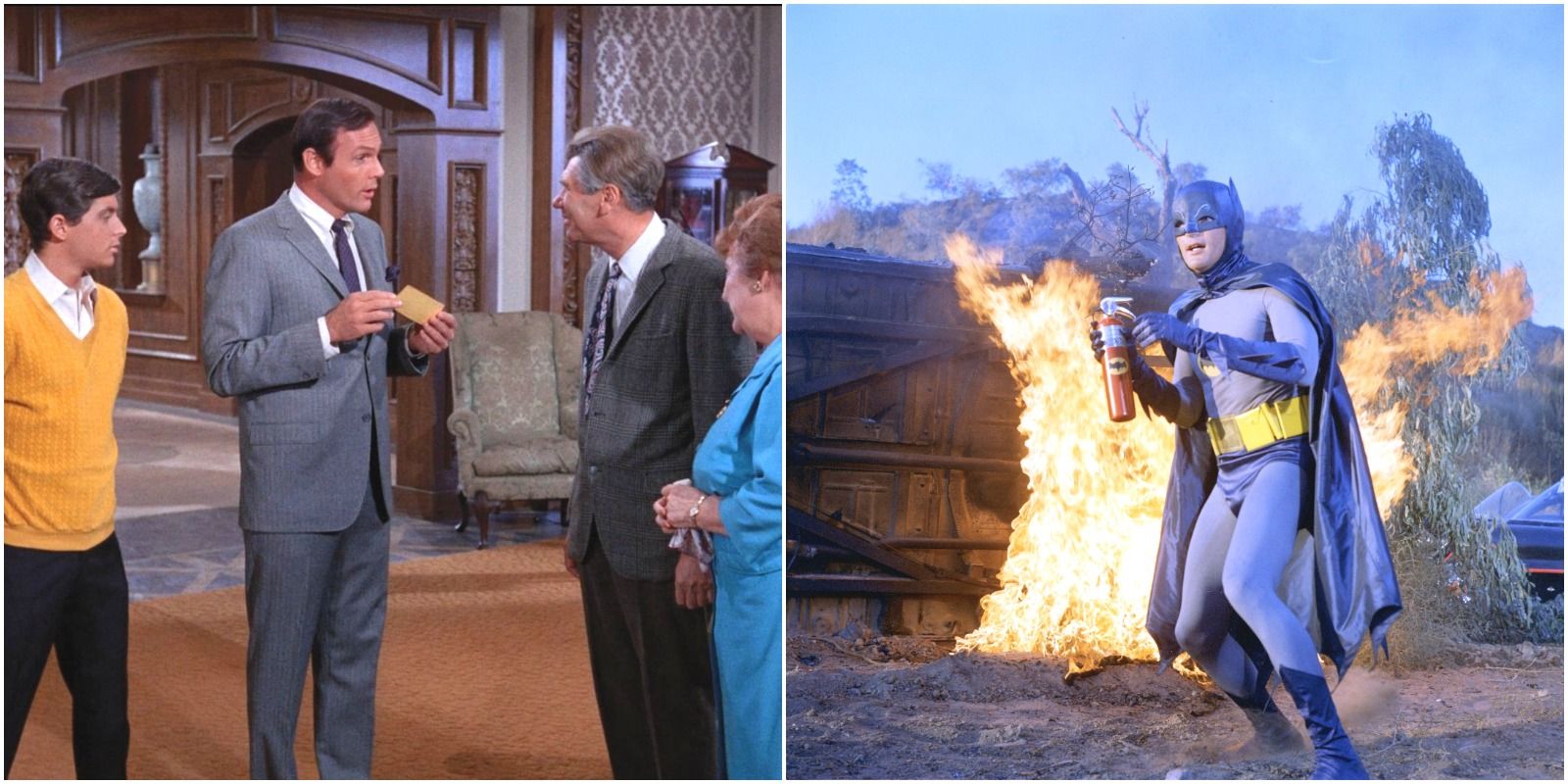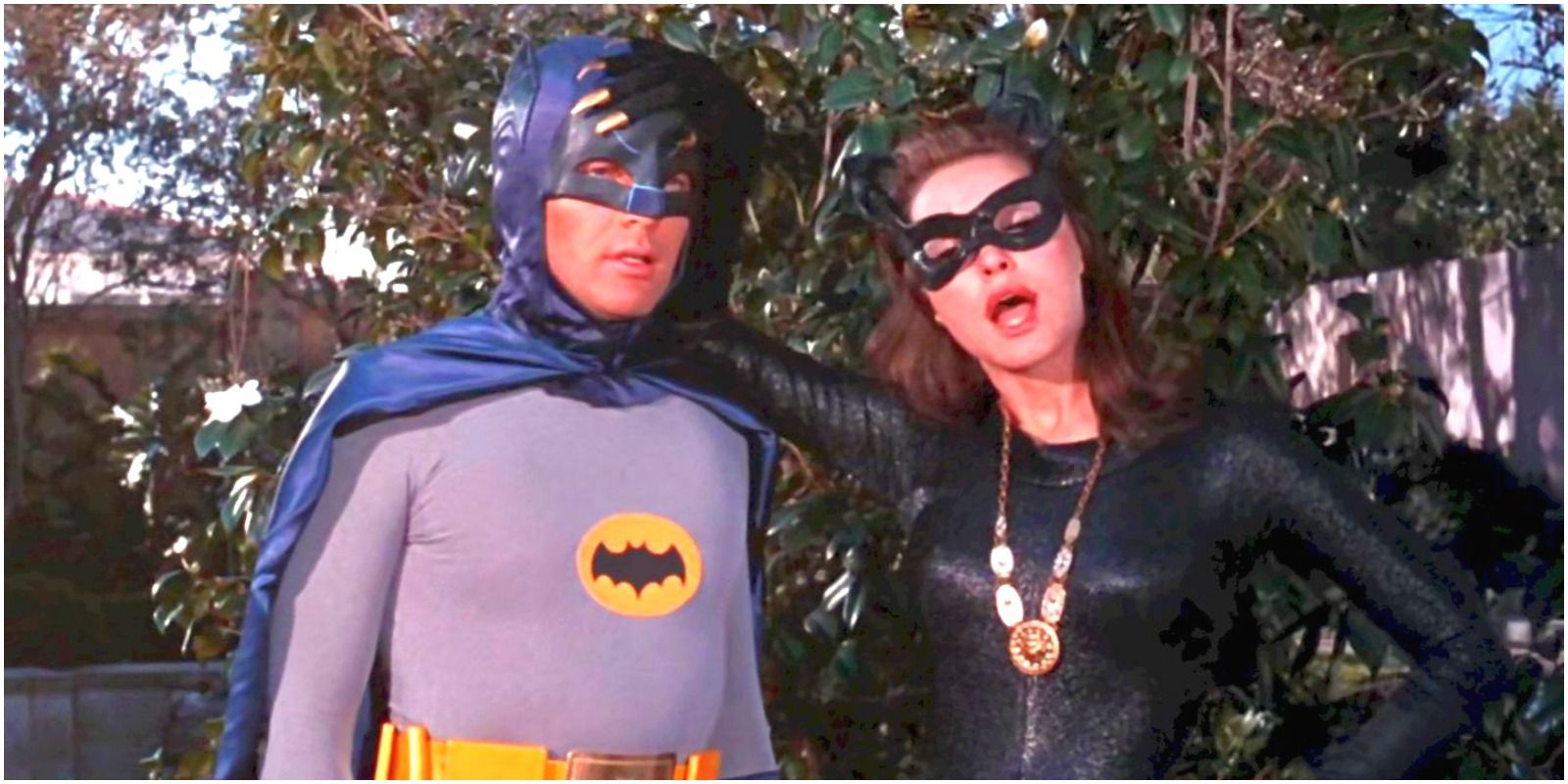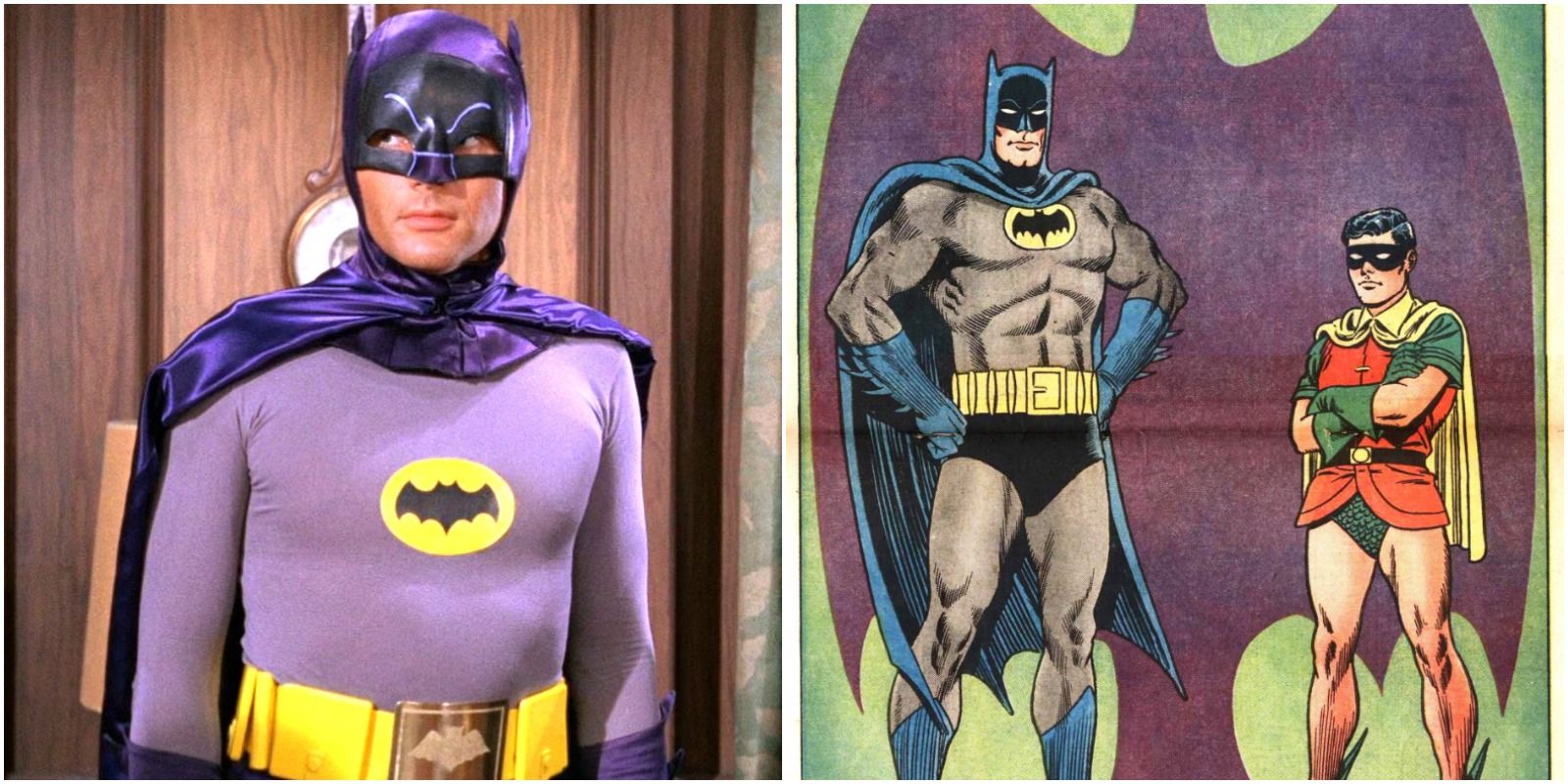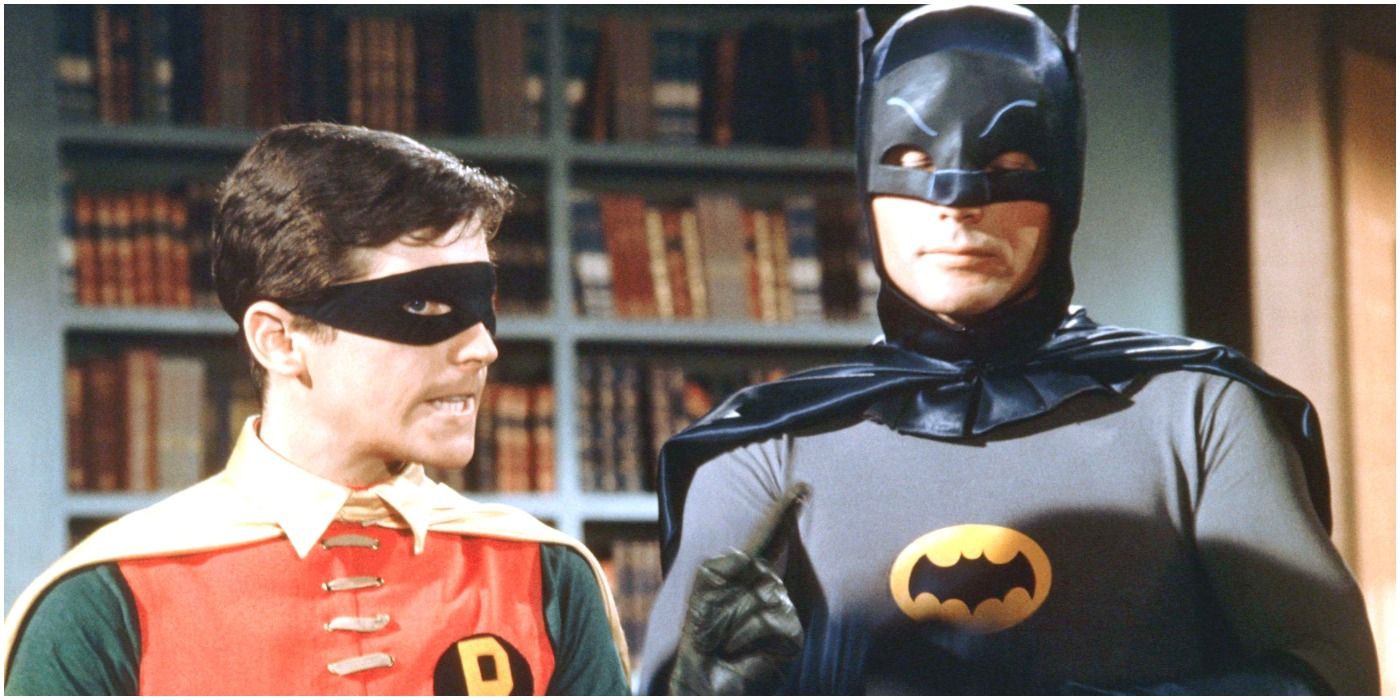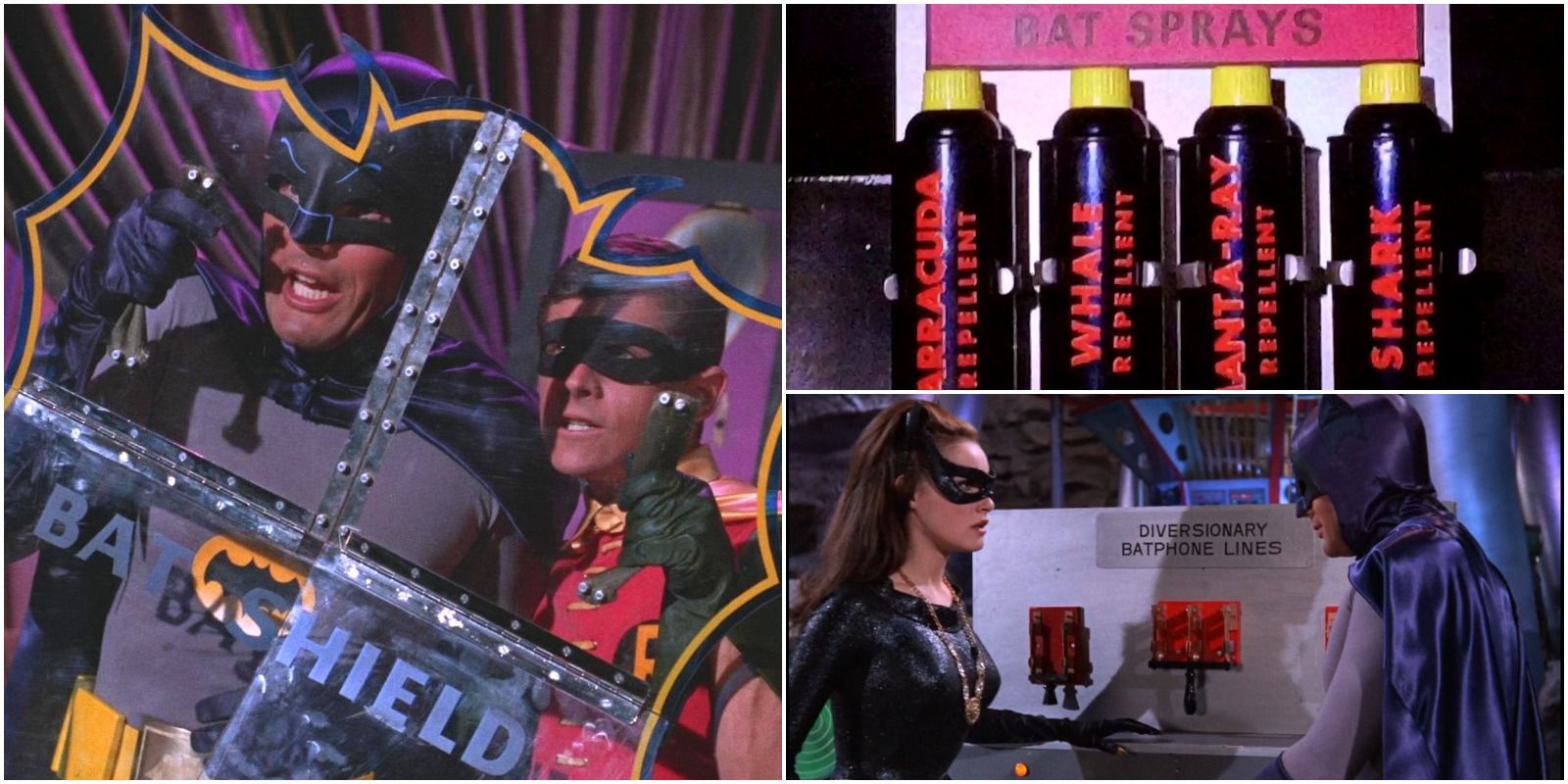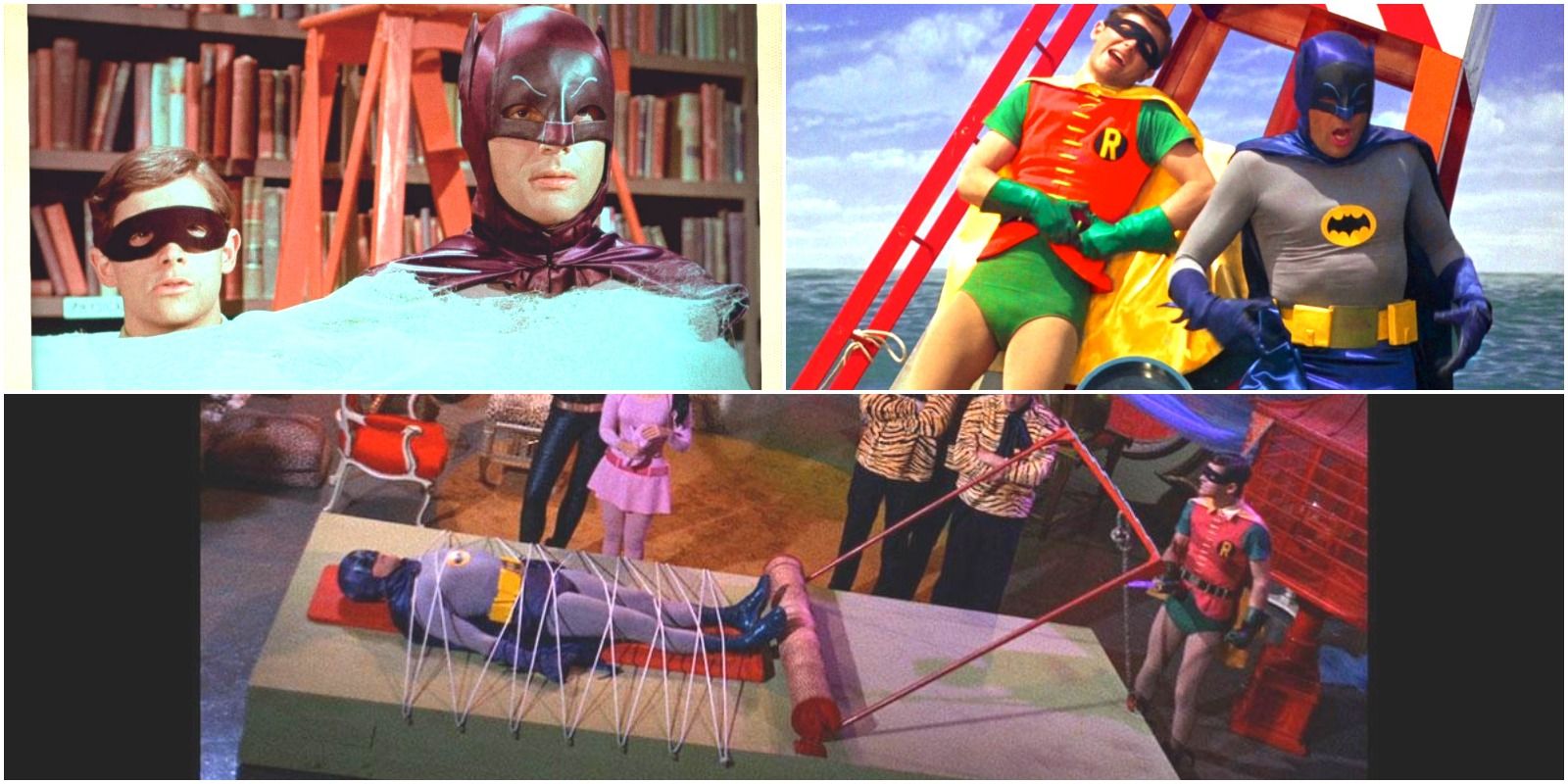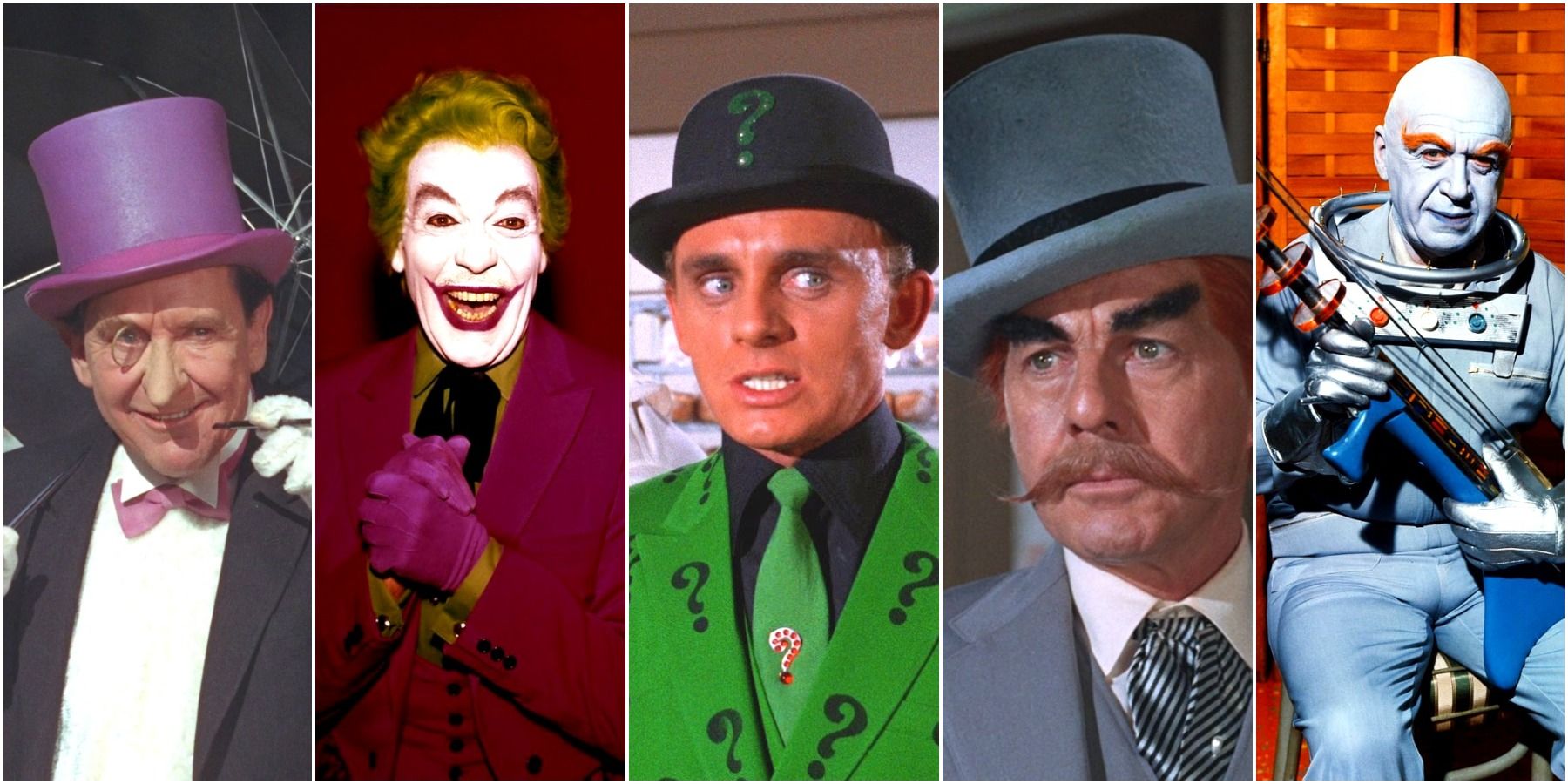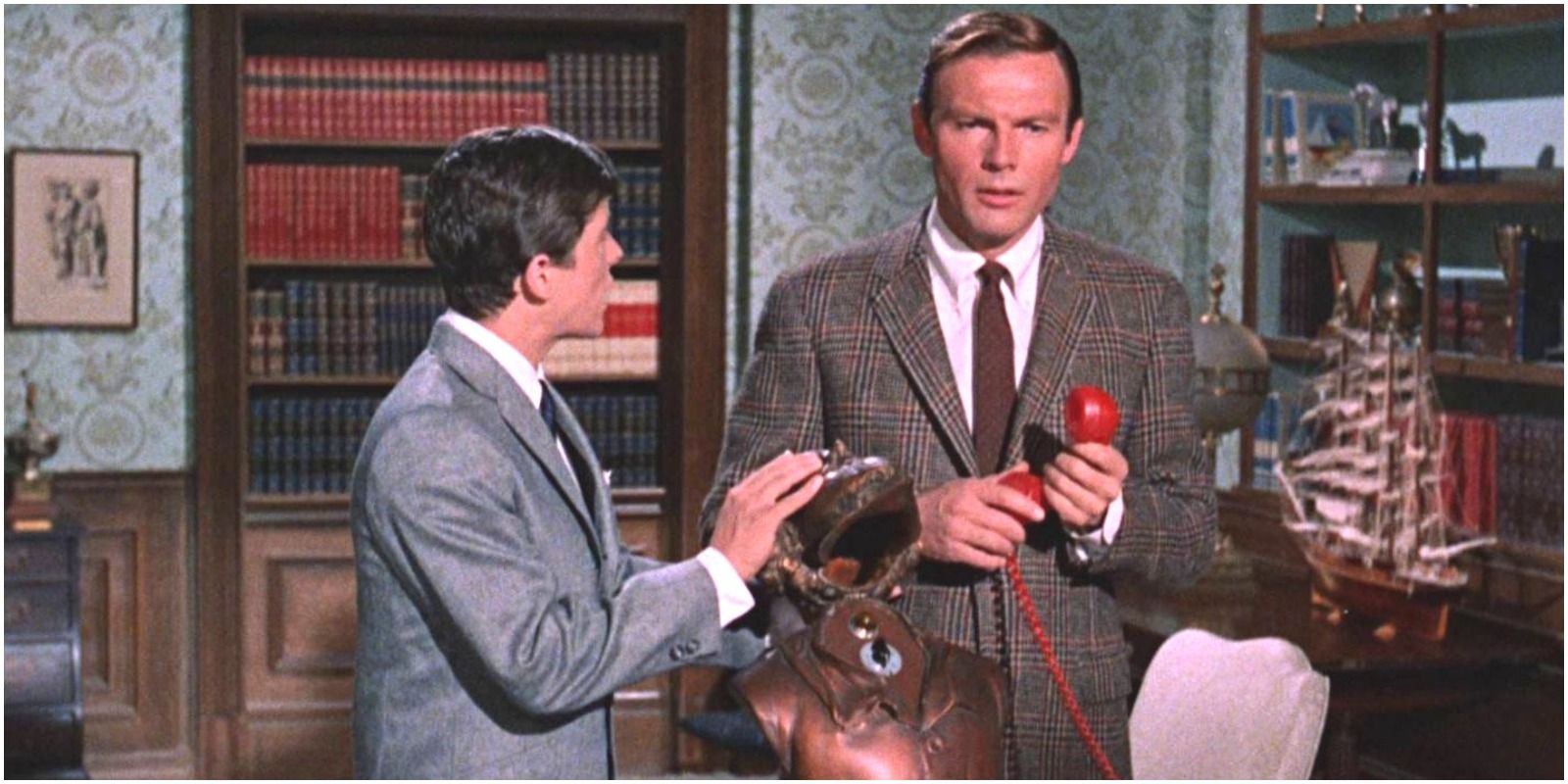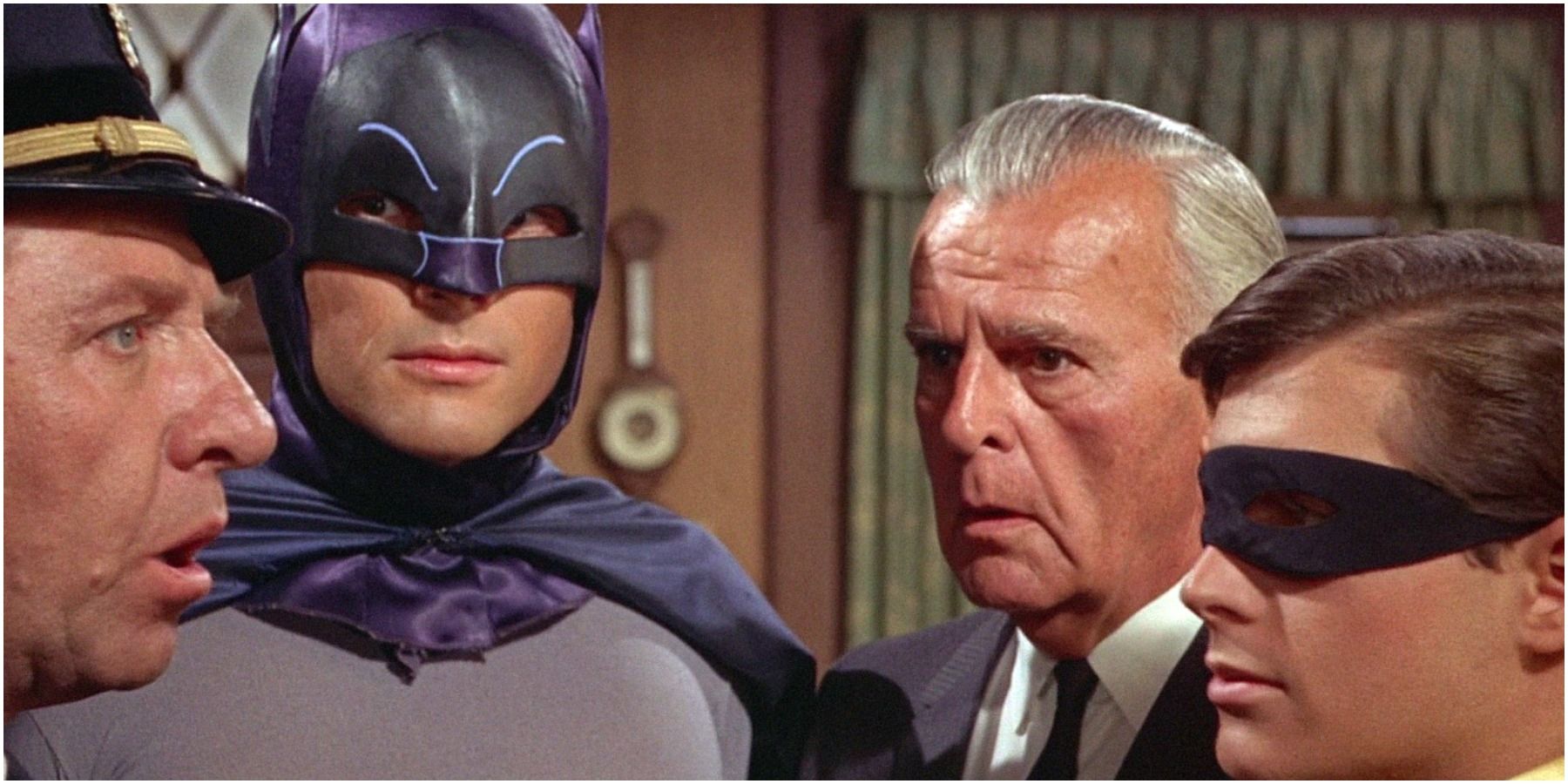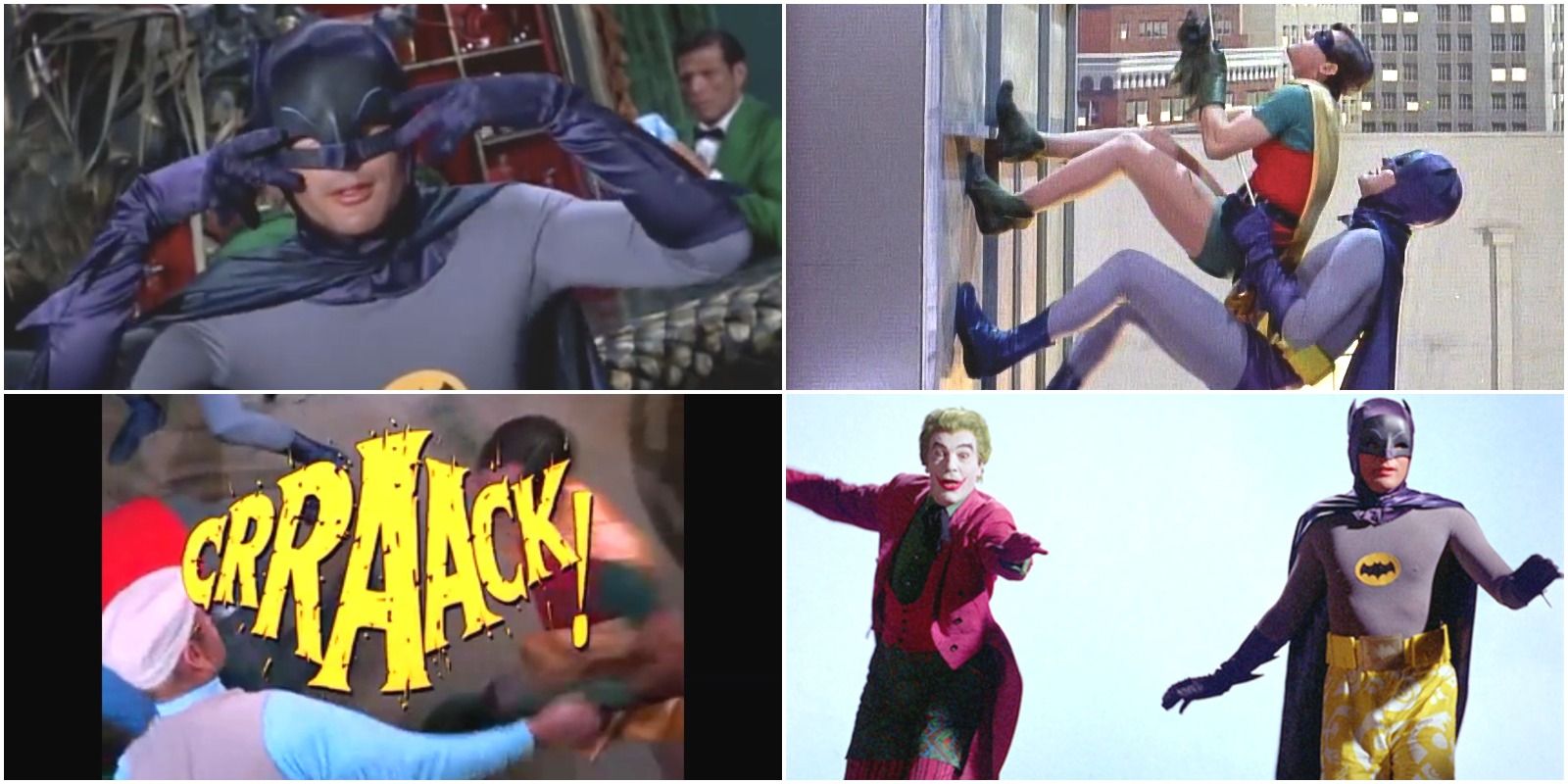To some, the most definitive version of Batman isn't the dark and brooding character that audiences have come to know from the Burton, Nolan, and Snyder films. Some fans prefer the goofier, more lighthearted, and less serious version of the character portrayed by TV legend Adam West. For these fans, the Keaton, Bale, and Affleck portrayals of the character just don't compare.
The now nostalgic 1966 Batman series redefined the franchise, introducing the hero to a newer audience, though not without some notable changes. Looking back, some aspects of the show well represented the comic book version of the Caped Crusader, while other more iconic aspects of the show did not.
10 Accurate: Batman/Bruce Wayne Split Personality
The contrast between the Batman and Bruce Wayne persona has become a defining feature for the character. Adam West portrayed this contrast well, making Bruce Wayne seem unaffiliated and unconnected to Batman in almost every way. For example, Batman in the show was a people person who enjoyed being around the denizens of Gotham City. Bruce Wayne was not, instead opting to spend his time away from the city in his mansion.
Having the different personas, depending on whether Bruce is Batman or not, has always been important for the character and the show depicts this brilliantly.
9 Not Accurate: Batman Doesn't Flirt With Catwoman… As Much
The relationship between Batman and Catwoman in the show is a bit different than it is in the comics. Catwoman has always been Batman's other half. She's one of the few women who can actually keep up with Batman, providing the much-needed excitement and romance in Bruce's life.
In the series, Catwoman and Batman do still flirt but Batman is much less receptive to her advances. It's not the back and forth relationship that comic fans might be familiar with. Batman is portrayed as a man who's dedicated to justice, not easily allured by riches nor women.
8 Accurate: The Batman Suit
Although not a high-tech Kevlar suit equipped with almost every non-lethal weapon known to man, the 1966 Batman costume does have all the essentials of a Batman suit. It's a simple costume equipped with a utility belt, a cape, and a bat cowl. Looking at the more classical renditions from the comics, especially from the '50s and the '60s, the 1966 suit is surprisingly similar.
The color scheme in particular is very loyal to the comics as the cowl was blue, the suit was grey, and the belt and chest logo were yellow.
7 Not Accurate: The show tried to be educational
A hilarious and notorious element of the 1966 series was the lessons Batman used to bestow upon Robin, who represented the younger target audience. Batman used to tell Robin to buckle up whenever he jumped into the Batmobile, correct his grammar, and taught him to practice good habits.
This was and is a very memorable feature of the series that will surely give modern audiences a nice chuckle. Unfortunately, Batman was never designed to be a role model in this way. The character was always more of a crime fighter, not a teacher.
6 Accurate: The Bat-Gadgets
The 1966 version of Batman was very resourceful, possessing all the necessary gadgets and tools needed for fighting crime. He was prepared for any situation and seemingly had everything in either his belt, in the Batmobile, or in the Batcave.
Batman's gadgets were fun and interesting in this show, much like how it is in the comics. Many of his iconic gadgets, ones that he still uses to this day, have made an appearance, including the Batcomputer, the grappling hook, and the Batarang. Even the more silly gadgets and tools, like the shark repellant from the film, were enjoyable and made sense in the context of the character.
5 Not Accurate: Batman & Robin Always Getting Trapped
At the end of the first half of each story arc, Batman and Robin would always get trapped in a seemingly inescapable death trap. The villain of the week would then leave the Dynamic Duo alone, falsely assuming that they couldn't escape. Then, at the last moment, Batman would use his wits to find a way out and to safety.
Though the cliffhangers did retain viewership each week, these scenarios don't accurately represent the character. Comic book Batman isn't as ignorant as he is in this show. Batman is smart enough to get out of a trap but is somehow not smart enough to avoid it in the first place.
4 Accurate: Batman's Rogues Gallery
The show featured many of Batman's rogues gallery. In order to stay loyal, for the most part, to the source material, popular Batman villains like Joker, Penguin, Mr. Freeze, and Riddler made an appearance on the show. These villains also retained many of their quirky traits and attributes from the comics like the Riddler giving clues of his whereabouts through puzzles and Penguin's deadly umbrella.
Even some of the lesser-known Batman villains made an appearance, like the Mad Hatter. Some villains like Egghead and Bookworm, made specifically for this show, became comic book characters in the Batman canon years later.
3 Not Accurate: Relies on the Batphone & not the Bat-signal
The Bat-signal does make an appearance on the show, but it is underutilized. Batman instead relies on his Bat-phone, which is connected directly to Commissioner Gordon's office. In turn, the overused Bat-phone is not only inaccurate but problematic.
Batman is essentially on call, only fighting crime when he is summoned, which doesn't make sense for a man who's so dedicated to justice. The phone is also worst than a signal as it puts Batman's secret identity on the line, since Alfred often answers the phone and talks directly to Gordon.
2 Accurate: Batman doesn't work solo
Although comic book Batman likes to brag about working alone, in reality, he doesn't. He has a lot of people who help him fight crime including Robin, Commissioner Gordon, and Alfred. Without them, Batman wouldn't be as great of a crime fighter, nor as grounded of a character.
In this show, Batman doesn't work alone. He surrounds himself with great allies that help him do his job. Batman knows when he needs help and welcomes it when appropriate. His most valuable resource is his allies and this show makes that extremely clear.
1 Not Accurate: The goofiness of the show
This show goes off the rails when it comes to its goofiness. Batman wasn't this scary mysterious figure who patrolled Gotham at night. Instead, he was a friendly not-so-scary vigilante who didn't take himself too seriously. The entire show didn't take him too seriously either; the series comes across more as a slapstick comedy rather than an action-adventure. Given that this show was for kids, this makes sense.
The Onomatopoeia fights, the horrible wall climbing, and the tongue-in-cheek dialogue were what made this show so great —and inaccurate.

